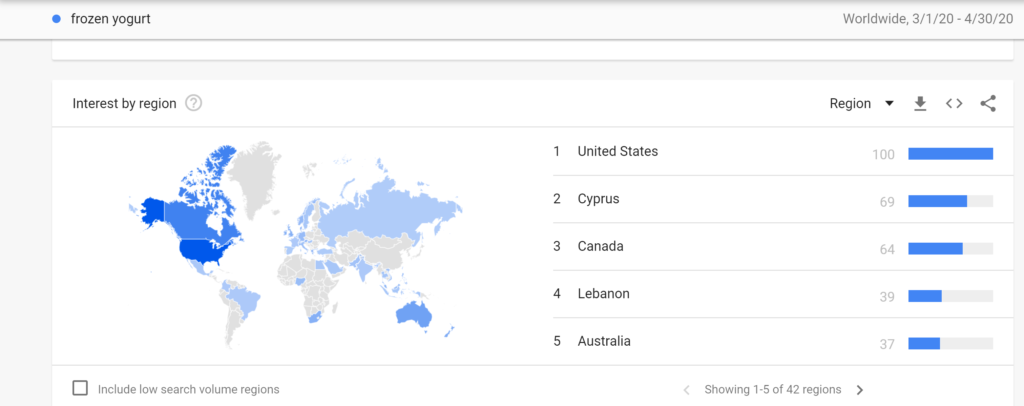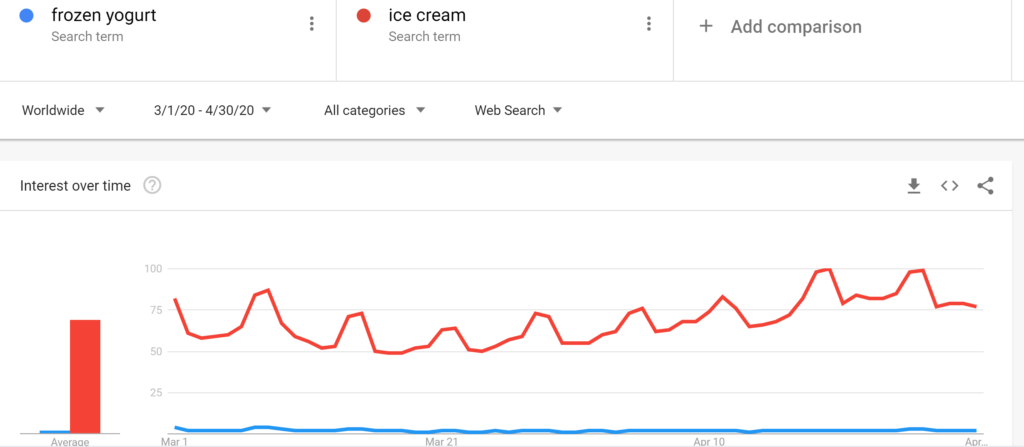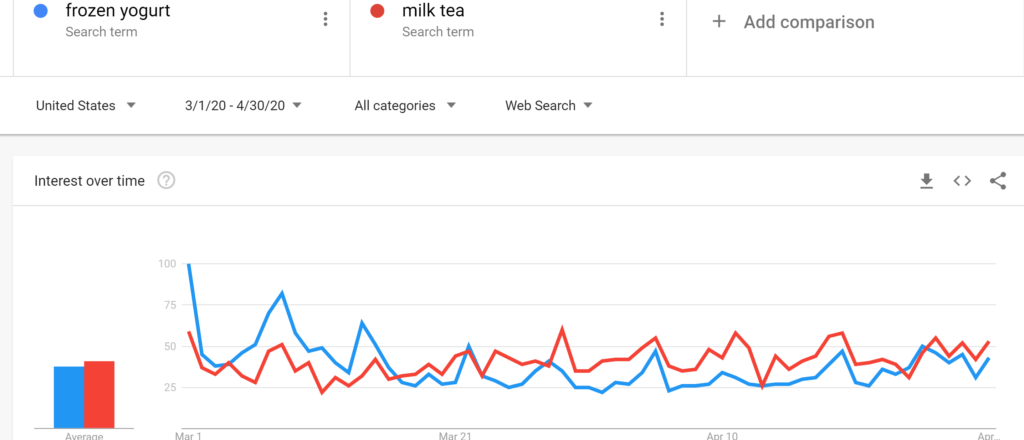We were curious about how behaviors changed when many frozen yogurt shops closed in mid-March due to the coronavirus pandemic. One indicator of what people are thinking about is what they search for online. Google Trends captures how often people search for a particular term using Google Search, the #1 search engine in the world, over a period of time. As of April 2020, Google’s global search engine market share was 91.89% and 88.21% in the United States.
CNBC reported that with people working and going to school from home, internet traffic, with UK internet service providers reporting double-digit increases in traffic. Akamai, a major content-delivery, cloud, and cybersecurity service provider, reported a more than 50% increase in online traffic on an average day. Travel sites, fashion sites, and restaurant site traffic declined, while grocery sites, delivery sites, and health screening sites benefited from the pandemic.
Frozen yogurt interest
What about frozen yogurt? Looking at worldwide search traffic for frozen yogurt for March and April 2020), interest hit a high on March 8, but dropped by 51% on March 10. Search traffic continued to decline thereafter. The low point occurred on March 26, when search traffic for frozen yogurt was down 73% from March 10. Traffic gradually increased since then, with higher traffic Friday-Sunday than during the rest of the week.
Search interest by region
Interest by region is based on the relative popularity of the search term, as a fraction of total searches in that location. Based on this measure, worldwide frozen yogurt interest was highest in the US, followed by Canada, Lebanon, Singapore, and Australia. The US and Canada have the most frozen yogurt shops. In the United States, interest was greatest in Oregon, Nevada, Arizona, Delaware, and Idaho – not where most froyo shops are. What exactly were people searching for about frozen yogurt though?

Top queries
The most popular queries worldwide related to frozen yogurt involved finding frozen yogurt from shops and making frozen yogurt at home. Frozen yogurt delivery interest rose 350% during this time period. The good news is that while frozen yogurt search traffic declined, people were still looking for froyo shops near them, especially those that delivered.

Comparison with other desserts
While interest in ice cream measured by search traffic did decline in mid-March, it recovered and exceeded early March levels by mid-April and ended April at higher levels than early March. Interest in ice cream is also, not surprisingly, much higher than interest in frozen yogurt.

Milk tea search traffic levels are closer to frozen yogurt traffic levels. But milk tea’s traffic patterns resemble ice cream though milk tea recovered faster than ice cream. By early April, milk tea search traffic levels were higher than early March.

Interest in milk tea has been rising over the past five years, while interest in frozen yogurt has been declining. By late 2018, worldwide search traffic for milk tea consistently exceeded that for frozen yogurt.
In the US, milk tea search traffic only exceeded frozen yogurt search traffic during the pandemic. Why? Interest in milk tea was highest in Hawaii, California, and Nevada during March and April. It might be weather driven. Temperatures were warm and pleasant during those months, averaging 83 degrees in March and 85 degrees in April in Honolulu. But taking a look at the queries, the popular ones were about making milk tea and the most popular rising query had to do with Vans coming out with milk tea inspired shoes.

What frozen yogurt needs is creative collaborations with other industries to remind people of frozen yogurt all the time.




